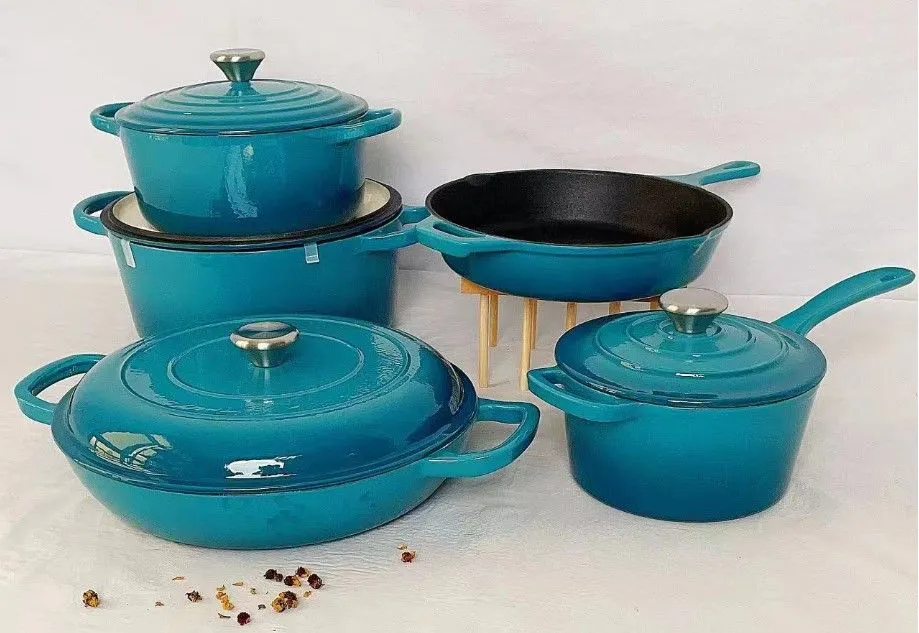
sizzler plate material
Exploring the Materials of Sizzler Plates An In-Depth Analysis
Sizzler plates have become a popular choice in restaurants and homes alike, providing an interactive dining experience that engages the senses. The sizzling sound of hot food, the aromatic steam rising, and the vibrant colors of fresh ingredients contribute to the appeal of this cooking style. However, the effectiveness of a sizzler plate is heavily influenced by its material composition. In this article, we will explore the various materials used for sizzler plates, their characteristics, and the advantages and disadvantages of each.
1. Cast Iron
Cast iron is perhaps the most traditional material used for sizzler plates. Renowned for its heat retention and distribution properties, cast iron can reach high temperatures quickly and maintain them for an extended period. This makes it ideal for searing meats and vegetables, ensuring a delightful crust and personalized flavor profile.
Advantages - Excellent Heat Retention Cast iron sizzler plates can stay hot for long durations, allowing food to remain sizzling at the table. - Versatile Cooking Options They can be used on stovetops, in the oven, or even over an open flame, making them suitable for various cooking methods. - Durability Properly cared for, cast iron can last for generations, becoming better with age through seasoning.
Disadvantages - Weight Cast iron is heavy, making it less convenient to handle during serving or cleaning. - Maintenance It requires seasoning to prevent rust and maintain non-stick properties, which can be cumbersome for some users.
2. Stainless Steel
Stainless steel sizzler plates are popular due to their modern appearance and ease of maintenance. They are often made with an insulated handle, providing comfort while serving.
Advantages - Hygienic and Easy to Clean Stainless steel is resistant to corrosion and staining, making it a favored choice in restaurants where cleanliness is paramount. - Lightweight Compared to cast iron, stainless steel is lighter, making it easier to handle. - Attractive Finish The shiny, polished surface adds an appealing aesthetic to the dining table.
Disadvantages - Heat Retention Stainless steel does not retain heat as effectively as cast iron, meaning food may cool down faster once served. - Cost High-quality stainless steel sizzler plates can be more expensive than their cast iron counterparts.
sizzler plate material

3. Ceramic
Ceramic sizzler plates provide a unique, stylish alternative for those who favor aesthetics. Often available in various colors and designs, they can elevate the presentation of any meal.
Advantages - Visual Appeal The vibrant colors and patterns of ceramic plates add a decorative element to the dining experience. - Non-Reactive Surface Ceramic does not react with food, ensuring that flavors remain pure.
Disadvantages - Heat Retention Like stainless steel, ceramic does not retain heat as effectively as cast iron. - Fragility Ceramic can chip or crack easily if mishandled, making its long-term durability a concern.
4. Aluminum
Aluminum sizzler plates are gaining popularity due to their lightweight nature and thermal conductivity. These plates heat up quickly, which is crucial in a bustling kitchen environment.
Advantages - Lightweight Aluminum plates are easy to handle and maneuver. - Good Heat Conductor They heat up rapidly, which is essential for achieving that sizzle when food is placed on the plate.
Disadvantages - Potential for Warping Aluminum can warp if exposed to extreme temperature changes, compromising the plate's structure. - Reactivity While anodized aluminum reduces reactivity, untreated aluminum can affect the taste of certain acidic foods.
Conclusion
Choosing the right material for sizzler plates largely depends on the specific needs and preferences of the user. Each material—be it cast iron, stainless steel, ceramic, or aluminum—has its unique set of properties that can enhance or detract from the dining experience. Ultimately, understanding these materials allows chefs and home cooks to select the best sizzler plate for their culinary creations, elevating both the flavors and the enjoyment of sizzling dishes. Whether aiming for traditional heat retention or modern convenience, there’s a perfect sizzler plate material for every kitchen.
-
Season Cast Iron Perfectly with GPT-4 Turbo TipsNewsAug.01,2025
-
High Quality Cast Iron Cookware - Baixiang County Zhongda MachineryNewsAug.01,2025
-
Premium Cast Iron Pan: Durable & Perfect HeatNewsAug.01,2025
-
High Quality Kitchen Durable Black Round Cast Iron Cookware Pancake Crepe Pan-Baixiang County Zhongda Machinery Manufacturing Co., Ltd.NewsAug.01,2025
-
Cast Iron Cookware - Baixiang County Zhongda Machinery | Nonstick, Heat ResistanceNewsAug.01,2025
-
High Quality Kitchen Durable Black Round Cast Iron Cookware - Baixiang County Zhongda Machinery | Non-Stick, Heat Retention, DurableNewsJul.31,2025


